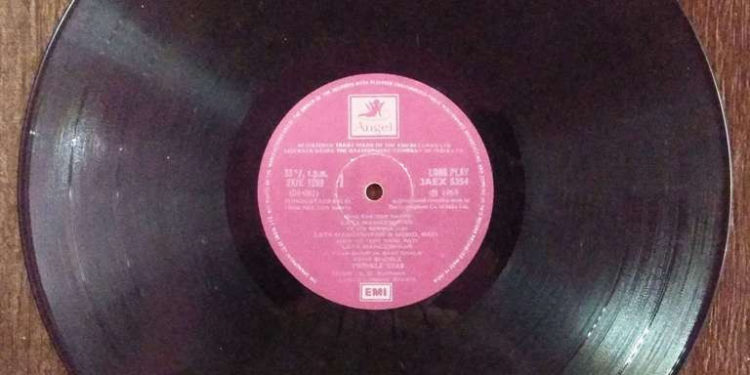In the age of digital music and streaming services, one might think that the allure of vinyl records has faded into obscurity. However, the reality is quite the opposite. Vinyl records, particularly rare ones, have seen a resurgence in popularity, captivating both seasoned audiophiles and curious newcomers.
The charm of rare vinyl transcends mere nostalgia, offering a unique blend of auditory experience, tangible beauty, and historical significance. Let’s delve into what makes rare vinyl so captivating and why it remains a collector’s dream.
The Unique Sound Quality
One of the primary reasons vinyl has maintained its appeal is its superior sound quality. Unlike digital music, which can sometimes sound compressed, vinyl offers a warm, rich sound that many listeners find more authentic and pleasing.
Rare vinyl records often capture performances with a depth and clarity that digital formats can’t replicate. This sonic authenticity provides an immersive experience, allowing listeners to hear music as it was originally intended.
The Tangible Experience
In a world dominated by intangible digital files, the physical nature of vinyl records is a significant part of their allure. The act of handling a vinyl record—removing it from its sleeve, placing it on a turntable, and gently lowering the needle—adds a ritualistic element to the listening experience.
Rare vinyl, with its unique artwork, inserts, and packaging, offers a sensory experience that digital music cannot match. Collectors often treasure the tactile and visual aspects of these records as much as the music itself.
Historical and Cultural Significance
Rare vinyl records are often steeped in history, capturing moments in time and reflecting the cultural zeitgeist of their era. For instance, owning a first pressing of The Beatles’ “White Album” or an original copy of David Bowie’s “The Rise and Fall of Ziggy Stardust and the Spiders from Mars” is like holding a piece of musical history.
These records often come with stories—how they were produced, the context in which the music was created, and the impact they had on listeners. Collectors appreciate this historical value, as it adds depth to their collection.
The Thrill of the Hunt
For many vinyl enthusiasts, the thrill of collecting rare records lies in the hunt. Scouring record stores, attending vinyl fairs, and digging through crates at flea markets in search of hidden gems is an adventure in itself.
Each rare find is a victory, a testament to the collector’s dedication and passion. The sense of discovery and the stories behind each acquisition make the pursuit of rare vinyl incredibly rewarding.
Investment Potential
Beyond the personal enjoyment and historical significance, rare vinyl records can also be a valuable investment. The market for vinyl has been steadily growing, and certain records have appreciated significantly in value over the years.
Limited editions, misprints, and records in pristine condition can fetch high prices among collectors. While not every record will appreciate in value, the potential for a high return makes rare vinyl a compelling investment for some.
Iconic Rare Vinyl Records
To illustrate the fascination with rare vinyl, here are a few iconic examples that every collector dreams of owning:
The Beatles – “Yesterday and Today” (Butcher Cover): This infamous cover featuring the band in butcher smocks was quickly withdrawn due to its controversial imagery. As a result, original pressings with the butcher cover are exceedingly rare and can fetch thousands of dollars at auction. This record exemplifies how external factors, such as cover art controversy, can enhance a vinyl’s rarity and value.
The Velvet Underground & Nico – “The Velvet Underground & Nico” (1966, First Pressing): Known for its iconic banana cover designed by Andy Warhol, this album was initially a commercial failure but later gained immense recognition. First pressings with the peelable banana sticker intact are particularly rare and highly sought after, symbolising the intersection of music and avant-garde art.
Bob Dylan – “The Freewheelin’ Bob Dylan” (1963, Withdrawn Version): The original version of this album featured different tracks that were later replaced before the official release. Copies of the withdrawn tracks are incredibly scarce, making them a prized possession for Dylan enthusiasts and vinyl collectors alike. This record showcases the value of early pressings with unique track listings.
Prince – “The Black Album” (1987): Initially intended for release in 1987, Prince ordered the album to be withdrawn just before its release, deeming it too dark and negative. The few copies that escaped destruction have become legendary in the vinyl community. When the album was eventually released in 1994, it still didn’t diminish the value of the original 1987 pressings, which remain a rare and valuable find.
The Rolling Stones – “Street Fighting Man” (1968, Picture Sleeve): This single, released during a time of political unrest, featured controversial cover art that was quickly withdrawn. Copies with the original picture sleeve are extremely rare and demonstrate how social and political climates can impact the rarity of a record.
Conclusion
The resurgence of vinyl records, particularly rare ones, is a testament to their enduring appeal. The unique sound quality, tangible experience, historical significance, and the thrill of collecting make rare vinyl a treasure for music enthusiasts.
Whether you’re a seasoned collector or just beginning your journey, the world of rare vinyl offers endless opportunities for discovery and enjoyment. So, next time you find yourself flipping through a crate of records, remember that you might just stumble upon a piece of musical history waiting to be rediscovered.











































































